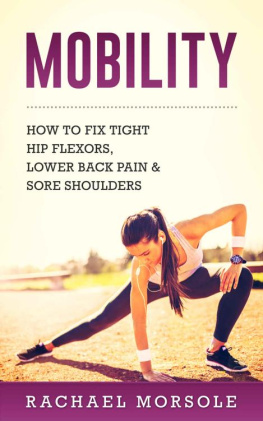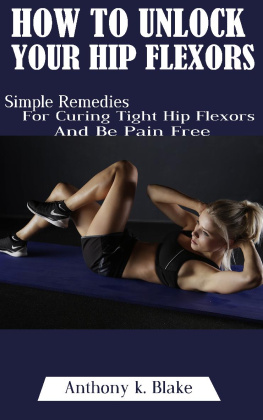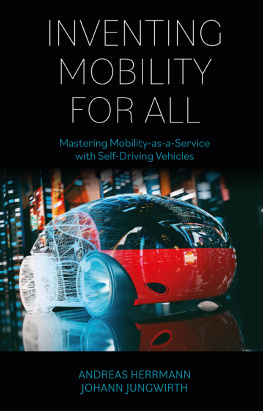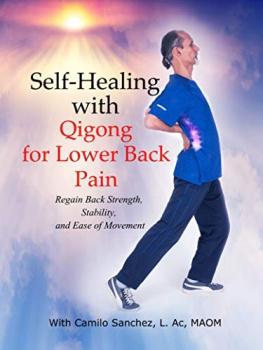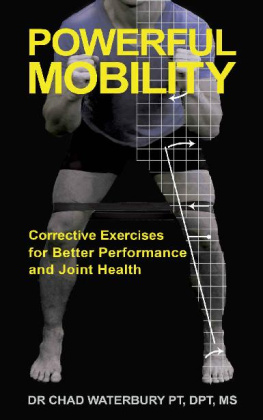Mobility
How To Fix Tight Hip Flexors, Lower Back Pain & Sore Shoulders
Table of Contents
Introduction
I want to thank you and congratulate you for purchasing this book.
This book contains proven steps and strategies on how to improve your mobility.
Fitness and mobility professionals say that your mobility determines your true age. If you take care of your body from a young age, you will be able to prolong your effective mobility. The good news is, physiological factors that affect your mobility will be kept in good condition with proper and regular exercise. If injuries or ailments to arise, hampering your mobility, you should do the best practices to heal yourself.
This book includes both preventive and therapeutic approaches to keeping your mobility at its best condition. Regular exercise will keep your bones, muscle and joints conditioned to prevent injuries. Certain types of stretching exercises will also stretch your muscles to make them more resistant to accidental hyperextension. These techniques are discussed in this book.
We also discuss the things that you should do to remove pain when they happen. Some of the pain may be caused by bad habits in posture, lifestyle or nutrition. Most people can still reverse the effects of these habits. Other types of pain are caused by accidents excessive use of a joint or a muscle group. These types of pain can be prevented through first aid methods and professional therapy. We discuss the solutions in detail inside the book.
Thanks again for choosing this book. I hope you enjoy it!
Copyright 2016 - All rights reserved.
This document is geared towards providing exact and reliable information in regards to the topic and issue covered. The publication is sold with the idea that the publisher is not required to render accounting, officially permitted, or otherwise, qualified services. If advice is necessary, legal or professional, a practiced individual in the profession should be ordered.
- From a Declaration of Principles which was accepted and approved equally by a Committee of the American Bar Association and a Committee of Publishers and Associations.
In no way is it legal to reproduce, duplicate, or transmit any part of this document in either electronic means or in printed format. Recording of this publication is strictly prohibited and any storage of this document is not allowed unless with written permission from the publisher. All rights reserved.
The information provided herein is stated to be truthful and consistent, in that any liability, in terms of inattention or otherwise, by any usage or abuse of any policies, processes, or directions contained within is the solitary and utter responsibility of the recipient reader. Under no circumstances will any legal responsibility or blame be held against the publisher for any reparation, damages, or monetary loss due to the information herein, either directly or indirectly.
Respective authors own all copyrights not held by the publisher.
The information herein is offered for informational purposes solely, and is universal as so. The presentation of the information is without contract or any type of guarantee assurance.
The trademarks that are used are without any consent, and the publication of the trademark is without permission or backing by the trademark owner. All trademarks and brands within this book are for clarifying purposes only and are the owned by the owners themselves, not affiliated with this document.
Chapter 1 Mobility Basics
Improving your mobility is an important part of your health. As people grow older, they generally lose mobility and flexibility. Their ability to move freely weakens. Some of the muscles that people do not normally use become stiff. There is a risk that these muscles may become sore when subjected to strenuous physical activities again.
To prevent this from happening, you need to make sure that you keep doing exercises to keep your muscles ready for action. The more you exercise your muscles, the better your mobility will be. However, certain exercises like those involving excessive weight lifting will also cause your muscles to become stiff. You should choose the right types of workouts if your goal is to maintain your mobility.
Mobility or the ability to move freely can be connected to multiple health factors. One of the most important factors is flexibility. Mobility and flexibility are different concepts but they are also connected with each other.
Flexibility s role in mobility
In sports science, mobility refers to a person s ability to move his or her joints to its maximum range of motion without getting injured. On the other hand, flexibility refers to the maximum range of movement for a joint or series of joints, as well as the length of the muscles which make the bending motion possible.
As we grow older, the muscles are prone to shortening. When the muscles in your joints are no longer flexible, your mobility will also be affected.
Stability and mobility
Lack of muscular stability is another factor that leads to poor mobility. Stability refers to the ability of the muscles and the bones to keep the body stable or upright when a person is moving. In the fitness world, the most popular form of stability is the core stability. Our core is designed to keep our upper body stable when we are standing, walking and running. Most people s core muscles are strong enough to perform this function.
The lack of strength of these muscles is usually highlighted when a person does awkward stances. When a person is hanging on his arms to do a chin-up for example, he needs a tight core to keep his body from swinging around. Most people who cannot pull themselves upward from a hanging position think that they only have bad back, arm or chest muscles. However, the problem is usually greater than that. Aside from the pulling muscles, the person may also have weak core muscles to stabilize his form.
Among your core muscles, your lower back is probably the group that is most prone to injury. When the muscles in your lower back stiffen because of lack of conditioning, you are more likely to become injured when you bend forward. However, your back muscles are not the only responsible muscles in this case. Your entire core muscles work together to stabilize your body. If your back muscles are injured, this may mean that your other core muscles are also weaker than they should be.
Aside from the core muscles, muscles from other joints in the body also affect stability. One of the most commonly injured joints is the knees. As you become older, the muscles in your knees also lose flexibility. When forced to do intense movements, these muscles may cause knee pain or injury.
Muscle strength and mobility
While stabilizing muscles keep your body in place, certain muscles like the biceps and the triceps are designed to generate pushing and pulling forces. When doing certain activities, you will need muscle strength to make sure that you can use your maximum range of motion.
When lifting heavy weights for example, your arms will not be able to move its maximum range of motion if your arm muscles are not strong enough.
Joint health and mobility
The health of your joints is also an important factor when considering mobility. The range of movements of your joints will be severely limited when they are injured. Aside from the muscle-related factors mentioned earlier, your joints will also be affected by your diet. A person prone to eating foods like peanuts, pork innards, beer, and legumes for example, is expected to have high blood uric acid level. These substances usually accumulate in a person s joints such as the knees, the fingers and the toes. When there is too much of these substances in your joints, you will feel pain. The pain will severely limit your ability to move.

